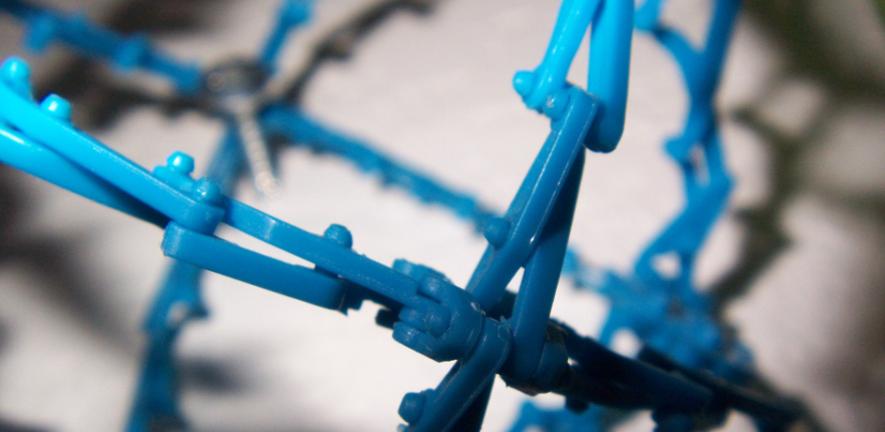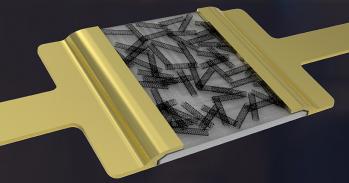
A UK-wide collaboration led by the Department of Earth Sciences is uncovering the counterintuitive properties of flexible materials.
A UK-wide collaboration led by the Department of Earth Sciences is uncovering the counterintuitive properties of flexible materials.
Fuelled by rapidly developing electronics and telecommunications industries, the global demand for high-performance materials is insatiable. In the UK alone, annual turnover associated with the design, manufacture and processing of materials exceeds £200 billion – income that relies on devising smaller, faster, stronger, cheaper and increasingly eco-friendly technologies. The challenge faced by the scientific community is that of meeting this demand by identifying new materials with ever more extreme capabilities.
Dr Andrew Goodwin, a Trinity College Research Fellow in the Department of Earth Sciences, has been tackling this problem by designing materials with ultra-flexible atomic-scale structures. Just as a collapsible toy sphere has entirely different properties from those of the plastic from which it is assembled, so too can these ultra-flexible materials break all the rules that ‘traditional’ systems are forced to obey.
Shrinking from the heat
One such rule, known to all who have struggled with a stubborn jar lid, decrees that materials should expand when heated. More often than not, this is bad news for industry. Mirrors used on satellites change dimensions simply on passing through the Earth’s shadow. Small daily variations in ocean temperatures limit the quantity of data that can be transmitted through optical fibres laid on the sea floor.
Quite the opposite occurs in a remarkable material called silver hexacyanocobaltate, which Dr Goodwin showed actually shrinks when heated. Assembled from long chains of cobalt, carbon, nitrogen and silver atoms, silver hexacyanocobaltate has a flexible structure that at the atomic scale looks just like garden lattice fencing. When heated, the lattice dimensions change very quickly – but an expansion in one direction is forced to produce an equally strong contraction in another direction. The contraction is so rapid that even a very small amount of silver hexacyanocobaltate is capable of compensating for the usual thermal expansion of ‘normal’ materials. Good news for industries where thermal expansion remains a fundamental problem.
Push and pull
It turns out that this strange new physics is not limited to thermal expansion alone. Squeeze most materials – or, to be more precise, apply an equal pressure in every direction – and, naturally enough, their dimensions decrease. But squeeze silver hexacyanocobaltate and its lattice-like structure folds up, collapsing in one direction but actually expanding in another. Far from an academic curiosity, this bizarre pressure-induced expansion has important applications in pressure-measuring devices, such as those used to determine aircraft altitudes and to monitor meteorological variations.
Silver hexacyanocobaltate is just one example of what is emerging to be a diverse and exciting family of materials. Understanding flexibility and its consequences in these compounds is an important problem in materials science. Dr Goodwin is addressing this problem with Professor Martin Dove in the Department of Earth Sciences and Dr Mark Calleja in the eScience Centre, using a range of experimental and computational techniques. The multidisciplinary, UK-wide collaboration also includes researchers at the ISIS Neutron Facility at the Rutherford Appleton Laboratory near Oxford, the University of Oxford’s Department of Physics and the University of Durham’s Department of Chemistry.
This approach of designing architectures in which flexibility plays new and varied roles is far from child’s play; instead, it promises the sort of materials with extreme properties needed to meet the increasing demands of key global industries.
For more information, please contact the author Dr Andrew Goodwin (alg44@cam.ac.uk)
or Professor Martin Dove (martin@esc.cam.ac.uk)
at the Department of Earth Sciences. This research was published in part in Science (2008) 319, 794–797 and is supported by a Natural Environment Research Council (NERC) eScience grant.
This work is licensed under a Creative Commons Licence. If you use this content on your site please link back to this page.





